Using Remote Sensing Technology To Monitor Stock Tanks
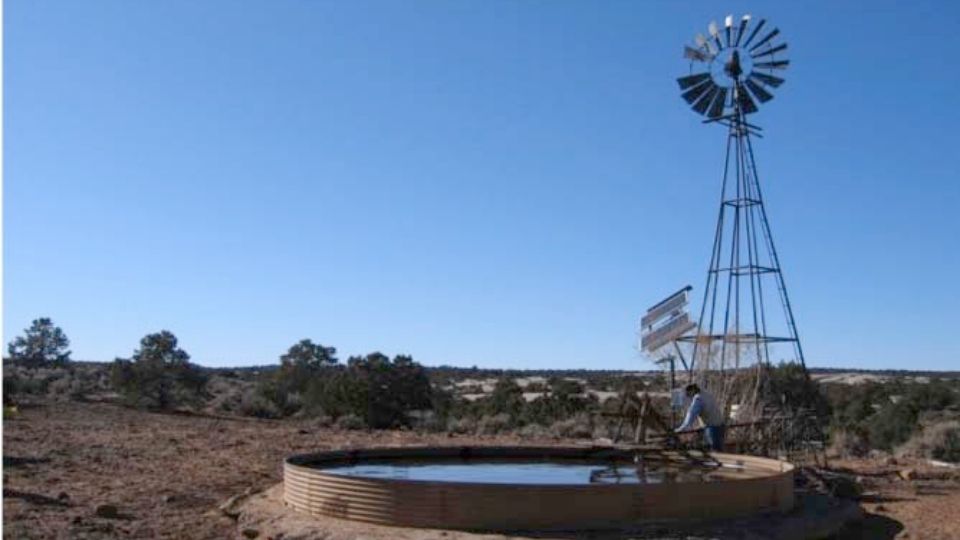
Project Participants: Kevin Heaton
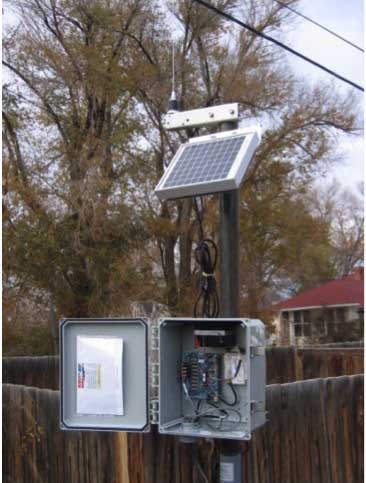 Southern Utah ranchers manage livestock in extremely remote areas. Ranchers monitor their cattle regularly, weekly or monthly, as their cattle spread out over thousands of acres. More importantly, ranchers monitor stock water and grazing resources daily and weekly, particularly when these resources are limiting.
Southern Utah ranchers manage livestock in extremely remote areas. Ranchers monitor their cattle regularly, weekly or monthly, as their cattle spread out over thousands of acres. More importantly, ranchers monitor stock water and grazing resources daily and weekly, particularly when these resources are limiting.
Beef cattle need 15-20 gallons of water each day to meet their needs. Southern Utah ranchers utilize water developments such as wells, troughs, pipelines, pumps, storage tanks, stock ponds and guzzlers to meet their livestock water needs. Troughs become targets for the local vandal, wells go dry, pipelines freeze or break, pumps quit, storage tanks leak, stock ponds erode, and guzzlers fail. Ranchers must monitor these systems regularly to ensure they are working properly. Monitoring is costly in terms of time, energy consumption and vehicle maintenance. Even with regular monitoring, the rancher cannot monitor 100% of the time and in his absence, according to ‘Murphy’s Law’, something will break, freeze, leak or quit working.
Technology is currently available that could reduce the costs associated with regular monitoring of stock water. Satellite radio has recently been adapted to be a reliable, stand-alone system that can monitor stock water supplies anywhere. The satellite-radio-stock-watering system is powered by a solar panel that charges a battery and operates the system 24 hours daily. Southern Utah has over 150 clear sunny days lending its location ideal for solar power (Western Regional Climate Center). The unit has a mini-satellite that transmits data generated from a transducer sensor to a website. A rancher can use the internet to monitor his stock water. If the water is depleted or there are drastic changes in the water level such as a leak, the satellite-radio-stock-water monitor will email the rancher and/or call his home or cell phone with an alert. The stand-alone nature of this system makes it the most feasible for remote, rugged ranches of Southern Utah.
Spotty cell phone service and spread spectrum radio, which require line of sight connectivity and repeater stations, both are infeasible solutions for remote stock water monitoring in southern Utah.
Unit Costs:
- Stock water monitor -- $1,800.00
- Installation -- $100.00
- Website monthly charge -- $3-10.00/month
Example of Possible Benefits:
While his cattle graze on winter pastures, one Garfield County rancher drives 20 miles one way on rough dirt roads 2-3 times per week to check his livestock’s water. A satellite-radio-stock-water monitor could improve his time management, and also save him fuel and wear and tear on his vehicle. An example of this rancher’s costs can be calculated by the following: 3 trips per week X 26 weeks (1/2 year) X 40 miles (round trip) X $0.50/mile vehicle cost = $1,560.00. Simply, cutting his number of trips in half would pay for the cost of the unit in just over 2 years. These calculations do not include any savings from labor efficiency, repairs and/or prevention of livestock death.
Actual data from stock water monitors:
This rancher’s monitor was very consistent and actually saved him twice. The pump quit working in the dead of winter and could have been a severe problem. However, the pump malfunction was quickly discovered and corrected. The black arrows indicate pump failures.
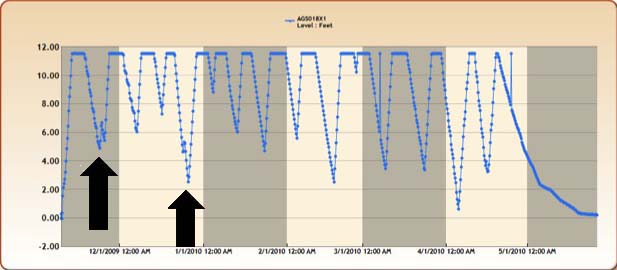
One problem that occurs quite frequently is spikes in the data. Several things can go wrong when sending data to satellites, causing jumbled data.
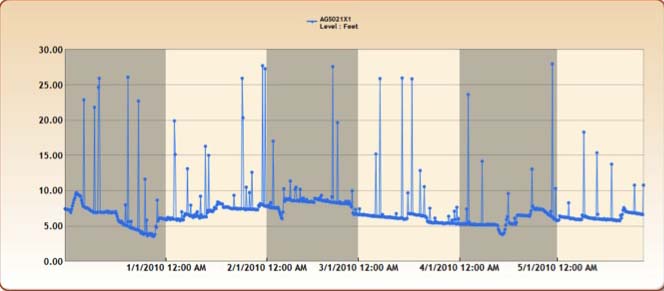
Below is the most unreliable monitor. Why? It's most likely faulty equipment. It will be sent back to the company for replacement.
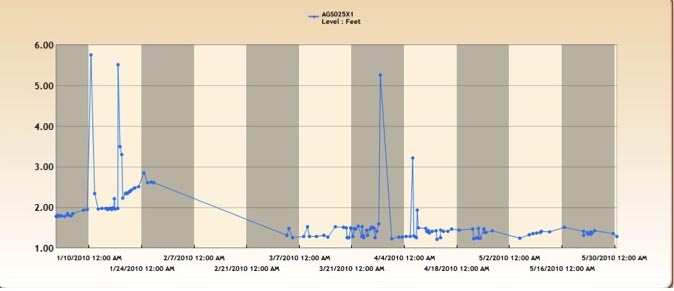
This project was funded by USU Extension and NRCS Conservation Innovation Grants Program.
Project Participants:
Kevin Heaton
Extension Association Professor
Utah State University Cooperative Extension
Paguitch, Utah
kevin.heaton@usu.edu

